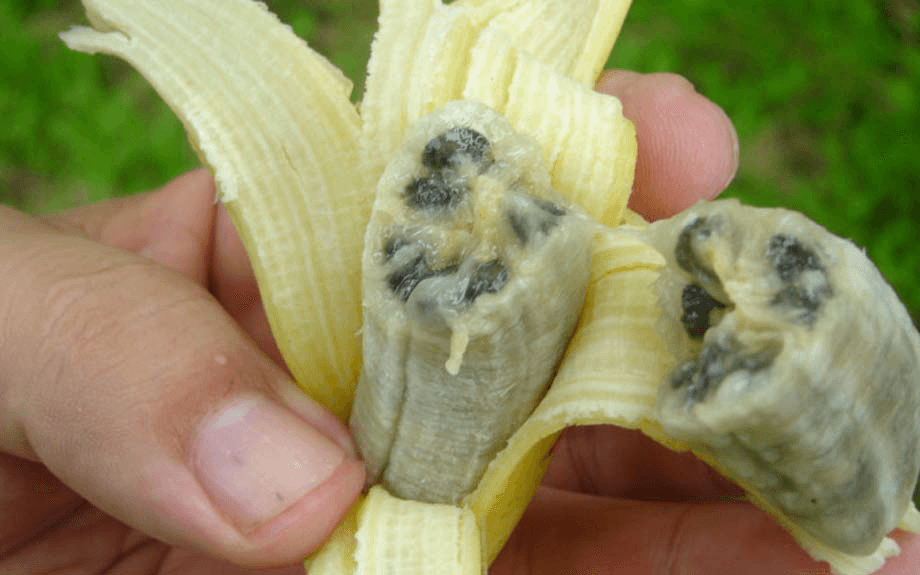That banana you eat with your breakfast may become a lot harder to find — and more expensive
Bananas infected with Panama disease rot and become unfit for human consumption.
A banana pathogen has devastated the banana crop of Southeast Asia since it emerged in the 1990s.
But Panama Disease Tropical Race 4 (TR4) had remained fairly isolated to that one region — until now. It recently made its way to the Middle East and Mozambique — a dangerous indicator of what could be ahead for the global banana crop. Scientists say further spread of the disease in Africa or to Latin America would be catastrophic.
University of Florida plant pathologist Randy Ploetz, who first identified TR4, says the disease is almost impossible to contain.
“There are no examples of anyone … identifying an initial outbreak and being able to restrict that outbreak to a given area. It’s a really insidious, hidden type of pathogen that doesn’t rear its ugly head until it’s widespread and causing a lot of damage. [T]here are no fungicides that will manage it [and] there is no cultural practice that is known that can manage it,” he says.
Ploetz says in the past, banana seed pieces were the way the disease moved great distances. But the soil-based pathogen can also move in water droplets or on workers’ clothing and shoes. If that’s the case, workers from Latin America who went to Mozambique to help establish plantations may already have brought the disease home with them.
Professor Rony Swennen, a leading banana expert at Leuven University in Belgium, said: “If [TR4] is in Latin America, it is going to be a disaster. … Teams of workers move across different countries. The risk is it is going to spread like a bush fire.”
Bananas are the fourth-most valuable global crop in the world, after rice, wheat and corn. They're a multi-billion dollar a year business. An estimated 410 million people depend on bananas for at least a third of their daily calories.
Since 2004, Ploetz says, scientists have been working on developing a genetically engineered Cavendish banana that would resist the TR4 fungus. The results so far have been disappointing.
“The banana is a very, very difficult crop to improve, and unfortunately there aren’t a lot of scientists who are working on bananas. [I]t’s very different than maize or soybeans or wheat, where there are lots of scientists who are concerned about it. Very few scientists are doing work to improve it,” he says.
Though the Cavendish is the variety the world knows best, there are many different types of banana available. “Between you and me,” Ploetz says, “there are other, better tasting bananas out there than Cavendish.” Typical consumers don’t agree, however. They expect the familiar look and taste of the Cavendish.
Other varieties don’t produce as well, either. “So, If you did plug other types of bananas into a Cavendish-type production system,” says Ploetz, “you just wouldn’t get the yields — and you’d have to charge quite a bit more to be able to sell those bananas in the developed world. If you go into Whole Foods and you look at Apple bananas, for instance … they’re a dollar a pound. They’re a lot more expensive than Cavendish.”
If TR4 spreads the way scientists fear, though, the developed world will have no choice but to say goodbye to the Cavendish bananas. But they'll likely be able to adapt to some new kind of banana or even another fruit.. For those in the developing world who count on the banana for their livelihoods and survival, it won’t be so easy.
